Post by Conner Corbett, undergraduate in Psychology pursuing an Interdisciplinary Neuroscience minor at Portland State University. Conner is a 2023 McNair scholar.
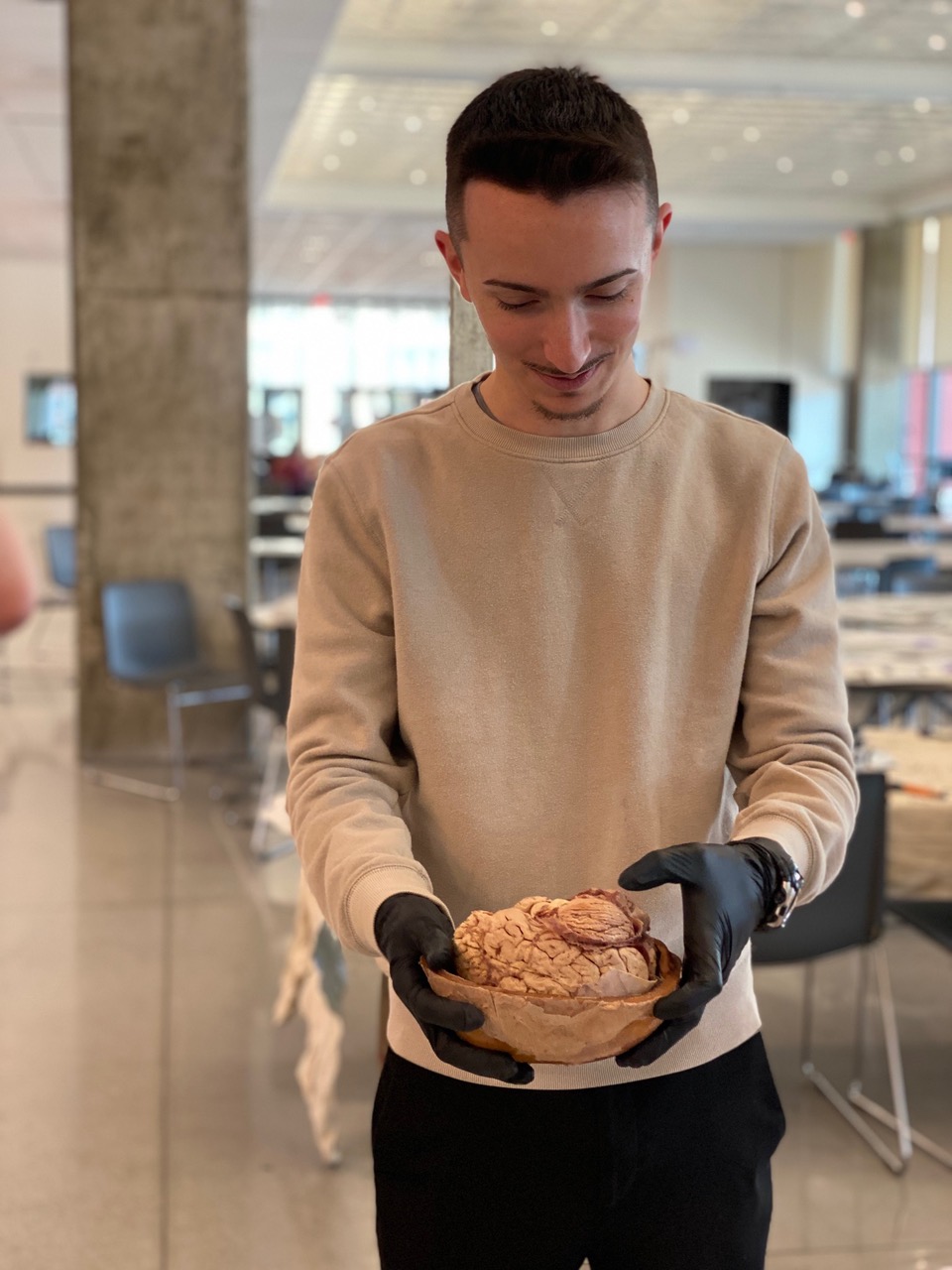
My Journey to Research
Growing up I have always had a deep curiosity for the brain. I was puzzled and intrigued by the trivia facts that are commonly told to kids, such as how the brain is always active even when we are asleep. Some questions that were born out of my initial curiosities include:
How does this organ in my head control everything I do?
What exactly influences my ability to learn?
What can I do to better improve my own learning ability?
Though these questions hovered over my head for many years (and still do), I am happy to say that I am now working on a research experiment that may have the potential to provide insights and even answers!

When I started as an undergraduate I didn’t know what I wanted to do with my life.
My goal was to pick a major to serve as a stepping stone to a fulfilling career. But my uncertainty vanished after I took courses in Psychology at Portland State University. I found a real passion for this topic after taking courses in Neurophysiology and Perception, where I finally got to hone in on the mechanisms and properties of neurons and how the different parts of our brain function.
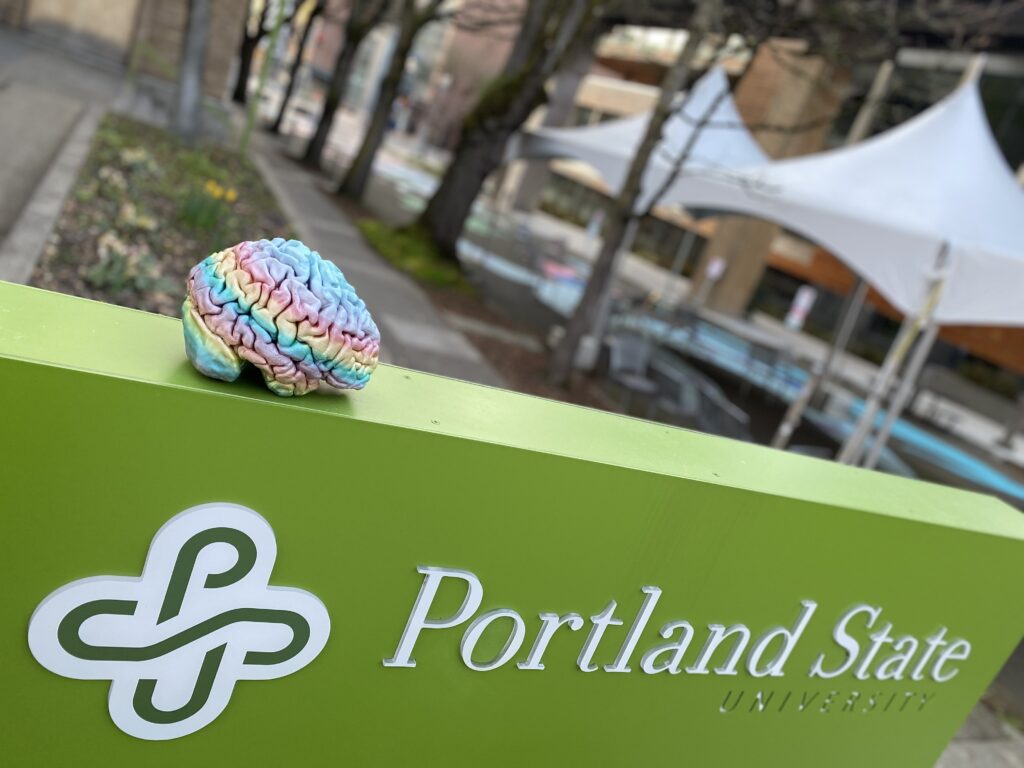
My sudden excitement and motivation to learn had a big impact on my career outlook. I began reaching out to neuroscience faculty at Oregon Health and Science University (OHSU), and described my motivation to learn and seek mentorship in their research labs.
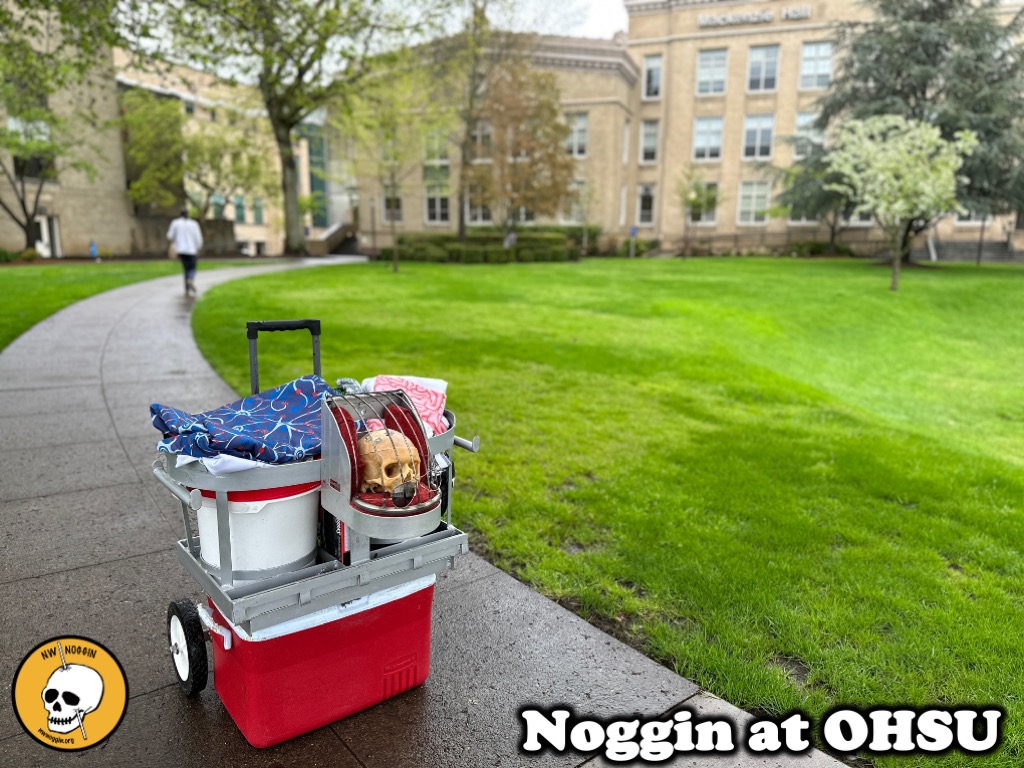
LEARN MORE: OHSU Neuroscience Graduate Program
LEARN MORE: OHSU Behavioral & Systems Neuroscience
Thanks to the support of PSU’s McNair Scholars Program, I was able to establish a mentorship in the OHSU research lab of Dr. Matt Lattal (a.k.a. The Memory Expert). In the lab I am running an experiment under the supervision of Dr. Rifka Derman, who is a postdoctoral research fellow at OHSU.
LEARN MORE: Three questions with memory expert Matt Lattal
In Matt’s lab, I’ve been able to learn about a potential answer to one of my original research questions: what exactly influences my ability to learn? That potential answer: Epigenetics.
Epigenetics
“Epigenetics is the study of how your behaviors and environment can cause changes that affect the way your genes work. Unlike genetic changes, epigenetic changes are reversible and do not change your DNA sequence, but they can change how your body reads a DNA sequence…”
LEARN MORE: What is Epigenetics?
Many people see epigenetics (“above” (epi) the genome) as a form of hope for a better future. That is because parts of one’s chromosomes are somewhat malleable to an individual’s choices, lifestyle and environment. These choices and lifestyle habits, including diet, stress levels and management, sleep hygiene, exercise habits, and substance use can have significant epigenetic effects.
LEARN MORE: Epigenetics of drug abuse: predisposition or response
LEARN MORE: The Impact of Nutrition and Environmental Epigenetics on Human Health and Disease
LEARN MORE: Diet and the epigenome
LEARN MORE: Sleep Deprivation and the Epigenome
LEARN MORE: Histone Modifications as an Intersection Between Diet and Longevity
In Matt’s lab we are studying a specific epigenetic enzyme known as histone-deacetylase-3 (or HDAC-3) and the role it plays in our ability to form and store memories.
Our chromosomes contain both DNA (including the genes that carry instructions for building proteins) and protein structures called histones. This combination of proteins and DNA is known as chromatin. Some of the DNA is wrapped around the histones, making it less available for expression.
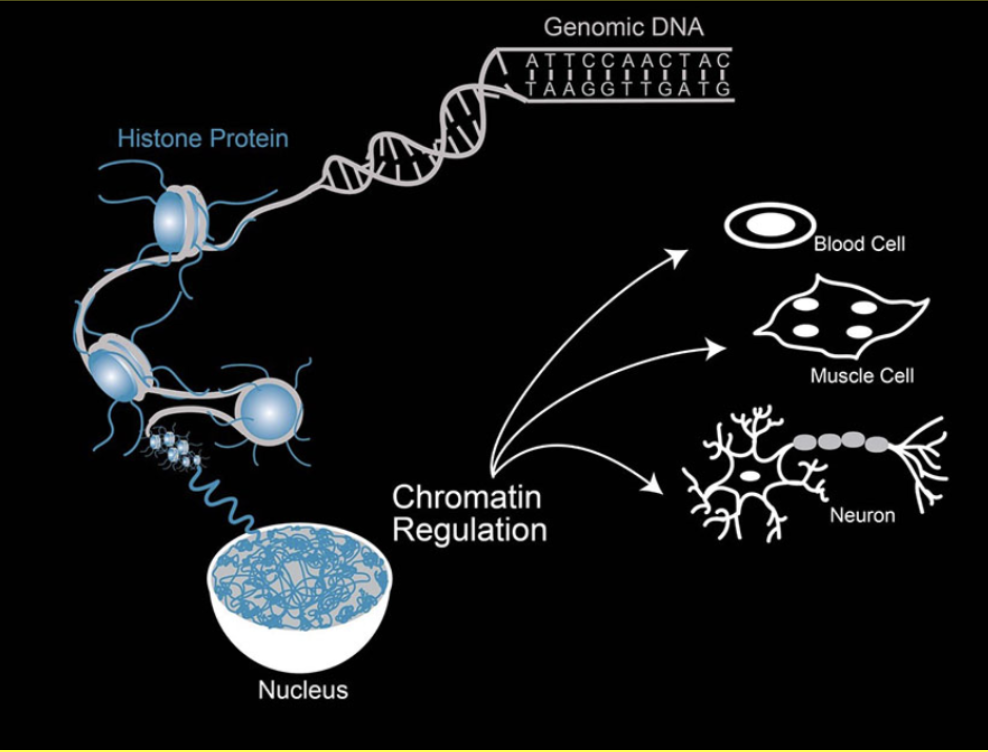
Histone protein plays a role in the repression and expression of genomic DNA. Genomic DNA contains instructions for building proteins, which build our cells, which build us. It is stored in the chromatin structure of chromosomes with part of it wrapped around the histones.
LEARN MORE: Chromatin and Chromosome Biology
There are three known classes of epigenetic regulation of gene expression, including DNA methylation, histone modification, and noncoding RNA action. Past work has found that HDAC-3 binds to the histone proteins, modifying them to further wrap up (or condense) DNA, thereby reducing gene expression and causing difficulty in learning and forming new memories.
On a molecular level HDAC’s (including HDAC-3) are known to condense chromatin causing a repression of gene transcription. However, HDAC inhibitors (including a molecule known as HAT) act against this and cause the chromatin to relax, which encourages the expression of genes.
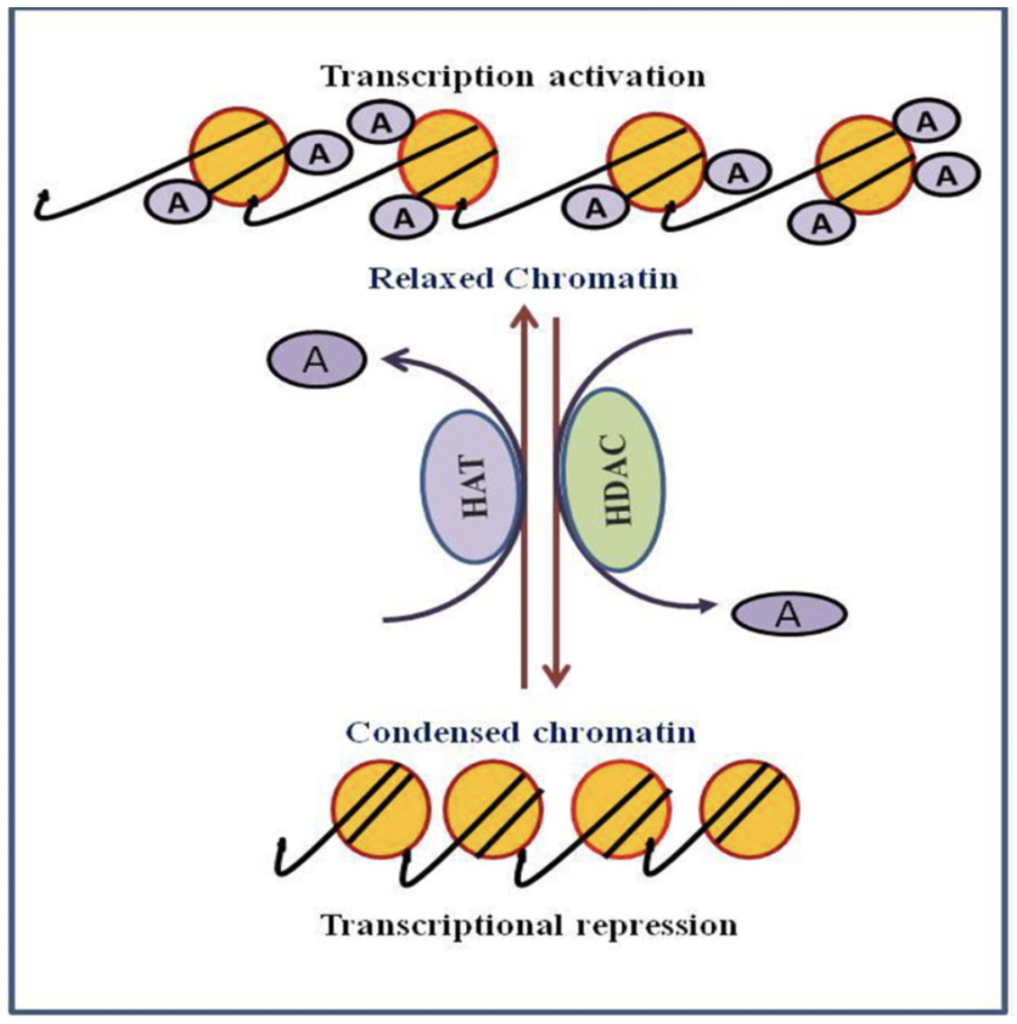
LEARN MORE: Regulation of chromatin by histone modifications
LEARN MORE: Histone Deacetylases Inhibitors in Neurodegenerative Diseases, Neuroprotection and Neuronal Differentiation
LEARN MORE: The Role of DNA Methylation and Histone Modifications in Transcriptional Regulation in Humans
In the Lattal lab we are using a dual viral approach to interfere with the function of HDAC-3. This means that two distinct viruses are injected into target brain regions in our rats in order to reduce the availability of HDAC-3, in an attempt to stop HDAC-3 from repressing the DNA in neurons in those specific regions, and allow that DNA to relax and increase the expression of genes.
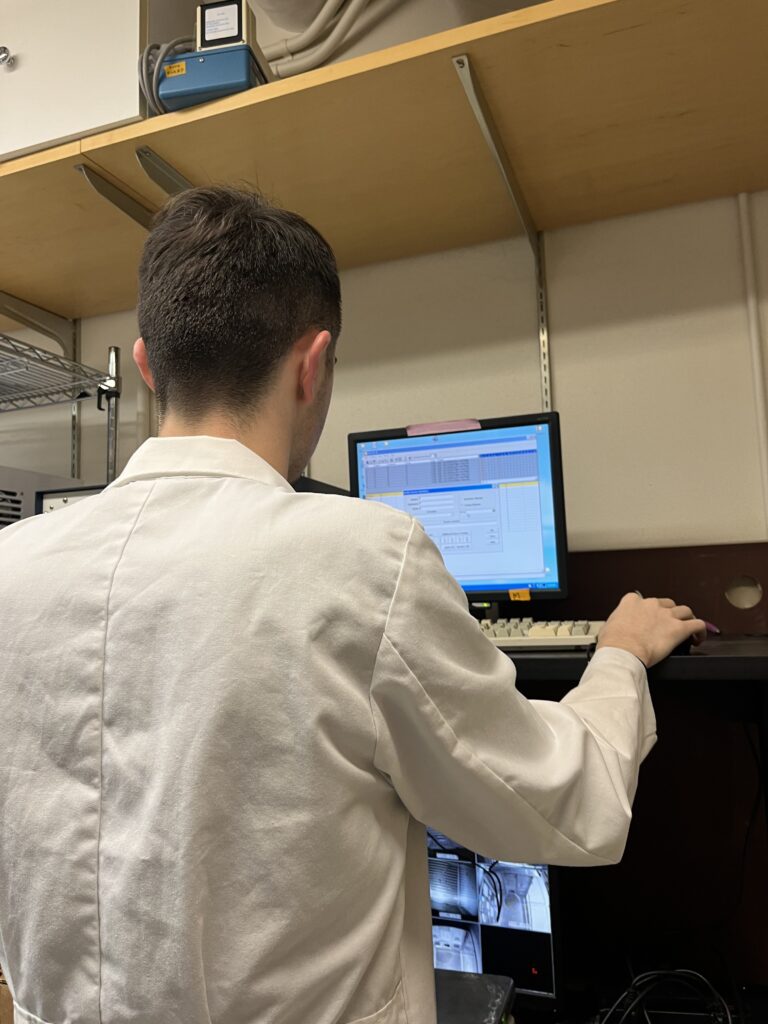
You may now be wondering, why is this important? It is important because a common way for our brain to make sense of the world and make predictions is through associative learning. Associative learning occurs when we’re repeatedly exposed to contingent stimuli. We learn to associate events that occur together, to better model relational aspects of our environment and develop predictive responses that help us survive and thrive. And associative learning requires gene expression.
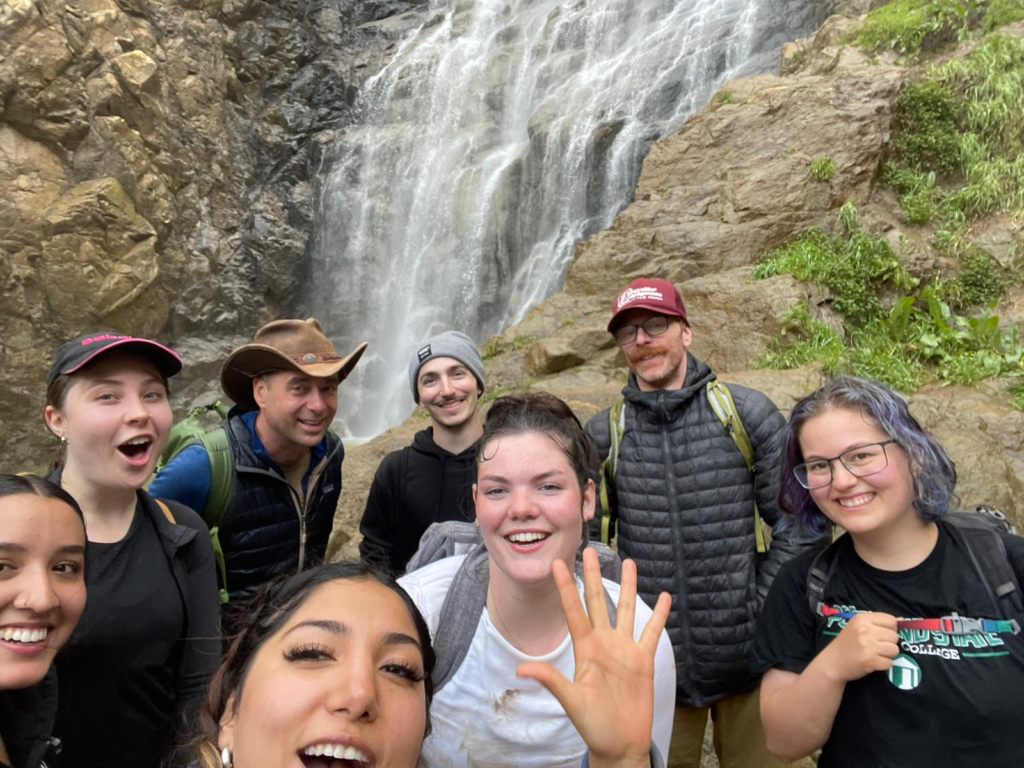
LEARN MORE: Associative Learning
LEARN MORE: What’s elementary about associative learning?
LEARN MORE: The study of associative learning: Mapping from psychological to neural levels of analysis
Though while it is important, some associative learning can also be harmful.
Let’s discuss alcohol use disorder as an example. A person can develop an alcohol use disorder when their brain and body get an intense craving for the sensations that intoxication brings. As they continue to drink, they will eventually associate certain people (fellow drinkers), places (bars and pubs) or objects with the motivation of this sensation. The association could be as simple as sign for their favorite bar that they frequent for their drinking habit. When they see that sign they will begin to crave their favorite drink. An associative learning event has taken place. Can this association be undone?
There are many behavioral intervention theories that are backed up by research, and contribute to effective treatments, such as addiction counseling and behavioral therapy (see links below). However, in the current work of Matt’s lab we are zooming in to this issue on a molecular level.
Research by Dr. Matt Lattal and his colleagues has identified the infralimbic cortex, and its connections with other brain areas as critical sites where HDAC-3 action can impair memory.
LEARN MORE: Increasing histone acetylation in the hippocampus-infralimbic network enhances fear extinction
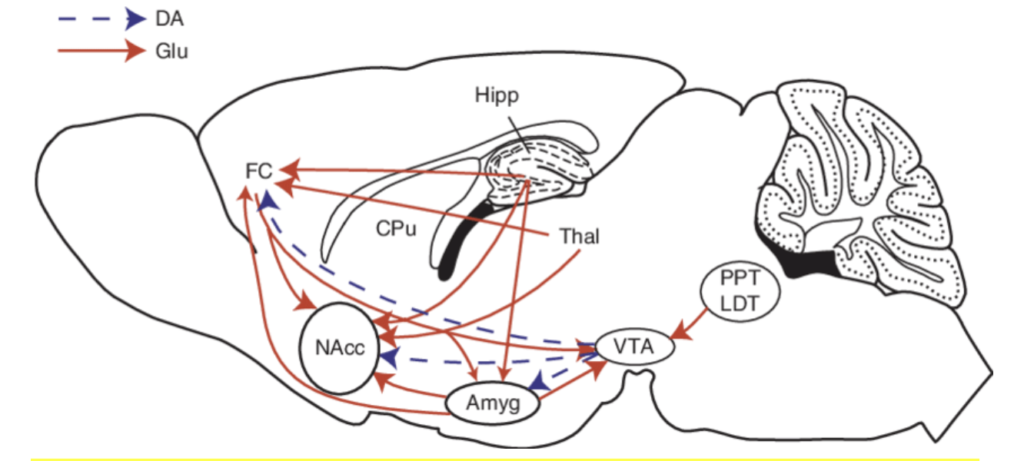
A model of a rat brain. Infralimbic cortex is in the Frontal Cortex (FC) region, above. Our lab’s target focus is the pathway between the Frontal Cortex (FC) and the Nucleus Accumbens (NAcc).
IMAGE SOURCE: Sagittal section of the rat brain showing the neural circuitry underlying conditioning processes in drug addiction
LEARN MORE: Infralimbic prefrontal cortex structural and functional connectivity with the limbic forebrain
The above image represents a rat brain, with some important regions labeled. The specific brain regions that are being targeted by our lab are the prefrontal cortex (PFC), the nucleus accumbens (NAc) and the cortical pathway that connects the two. We are targeting the neurons in this region because previous work found that this set of networked brain areas is highly active during associative learning.
LEARN MORE: Understanding Alcohol Use Disorder
LEARN MORE: Drugs, Brains, and Behavior: The Science of Addiction
LEARN MORE: Evidence-based practices for substance use disorders
LEARN MORE: Substance Use and Co-Occurring Mental Disorders
LEARN MORE: Principles of Drug Addiction Treatment
How are we testing this?
There are multiple phases of the behavioral conditioning process in this experiment. There is even a surgical step in between these behavioral phases.
Our experimental steps are, in order:
- Pavlovian conditioning
- Instrumental learning
- Pavlovian to instrumental transfer
- Intracranial surgery – brain injections
- Behavioral extinction training
- Finally the ultimate test – Pavlovian instrumental transfer testing following behavioral extinction. As I write this post, we are currently in the early phases of this part of the experiment.
LEARN MORE: Classical (Pavlovian) Conditioning
LEARN MORE: Operant (Instrumental) Conditioning
LEARN MORE: The three principles of action: a Pavlovian-instrumental transfer hypothesis
We use rodent models, and our sample consists of 40 male Long-Evans rats. The associative learning construct applied in our testing is appetitive associative learning (food reward!). During the testing our sample will be placed in Skinner boxes where they will be conditioned to associate cues in order to elicit an instrumental response to earn pellets.
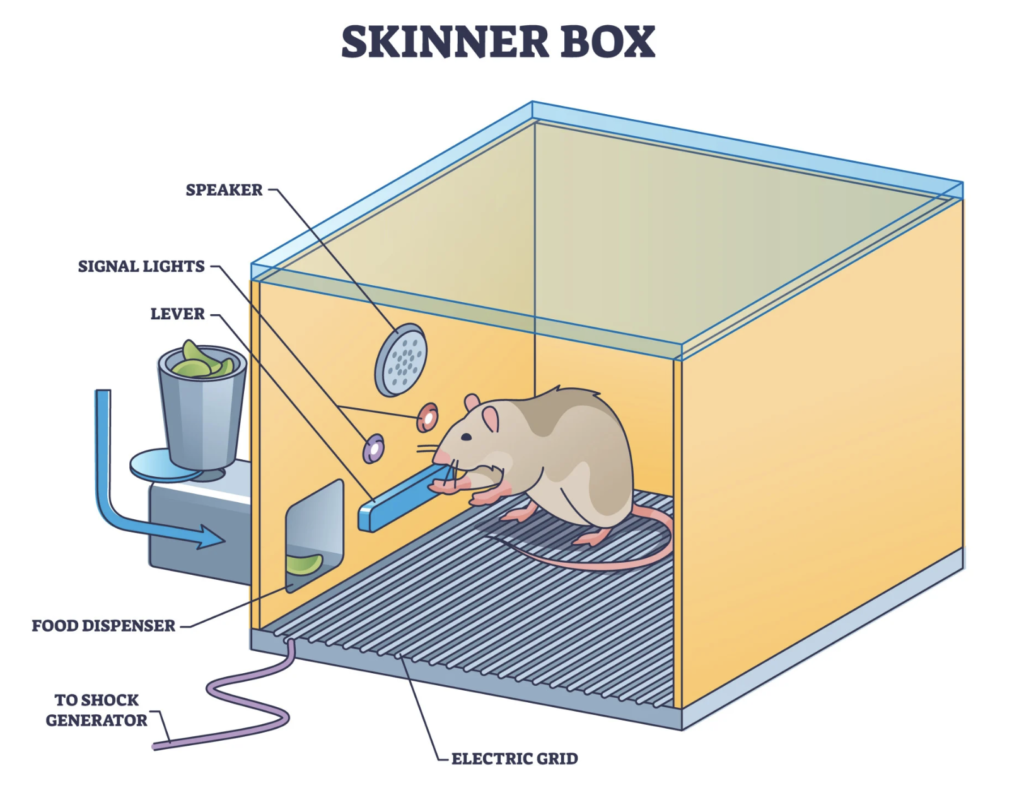
IMAGE: Skinner Box: What Is An Operant Conditioning Chamber?
LEARN MORE: Operant Conditioning
LEARN MORE: B. F. Skinner’s contributions to applied behavior analysis
Conditioning to Cues
The goal of the first step of the conditioning process is for the rat to simply learn that a specific light cue (a positive cue) that is presented in the Skinner box leads to the delivery of a food pellet.
Then, in step two, a negative cue is introduced. The negative light appears, but no food is dispensed. Eventually the rat is placed in a Skinner box with only one lever. This is the instrumental learning portion of the experiment (step 2). The rat learns that pressing the lever dispenses a pellet. This instrumental step allows us to test the association between eliciting an “instrumental” or “operant” action (pressing the lever) and receiving the food. This is also a great way to measure motivation. The more the rat presses the lever, the more likely it is that they are motivated to earn that food.
In the third step, the rat is presented with both light cues and the lever, and the anticipated outcome of this learning paradigm is for the rats to respond to the positive light cue by pressing the lever to earn the food pellet. This will associate this learned paradigm with the pleasure of getting food by the cue.
Changing the brain with viruses
Once this behavior is established, all rats undergo intracranial brain surgery. Roughly half will receive the two viruses that are predicted to interfere with HDAC-3 in specific neurons. Theses are the “experimental subjects,” while those rats who don’t receive the viruses are the “controls.”
The HDAC-3 virus inhibits the HDAC-3 enzyme. You may recall earlier in this post that HDAC-3 binds to the chromatin and represses DNA/gene expression. This causes a learning deficit. By injecting the lab-made virus into the brain to inhibit HDAC-3 activity, more genes will be expressed instead of repressed. We predict that this will improve learning.
LEARN MORE: Adeno-associated Virus (AAV) Dual Vector Strategies for Gene Therapy
LEARN MORE: Viral Delivery Systems for CRISPR
Extinction
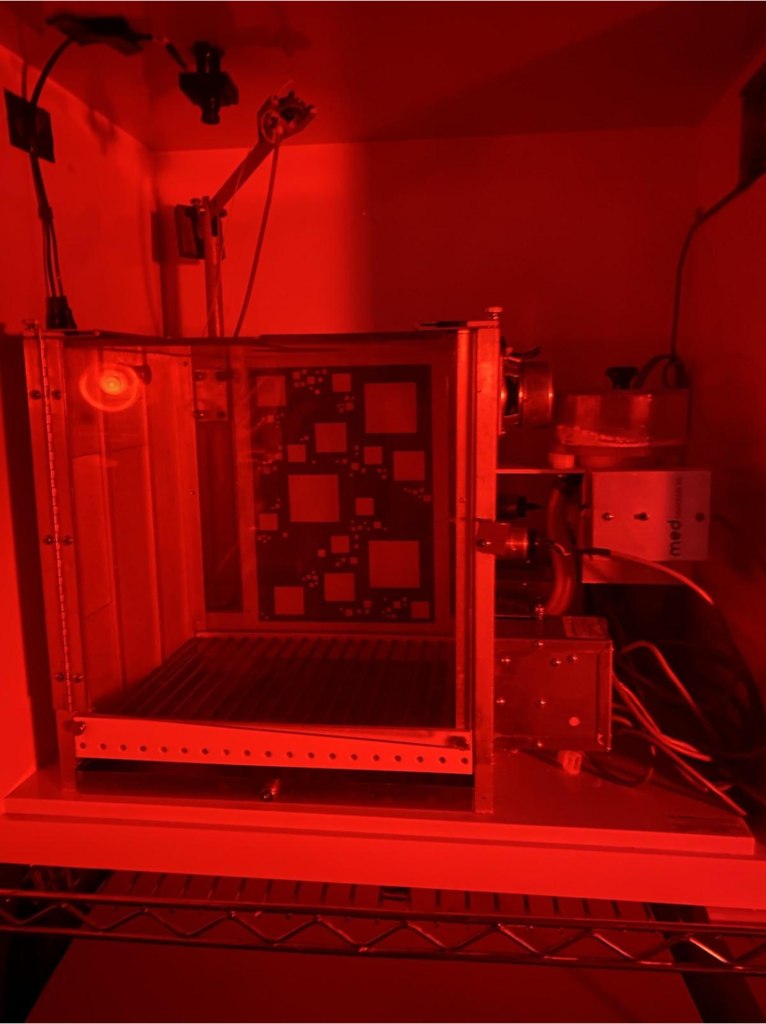
Following surgery and a resting period, the rats will under go behavioral extinction training.
Our Skinner boxes (above) have sensors in the food dispenser that detect each time a rat stuck their head inside. This is measured as a “food entry.” A food entry tells us that a rat was expecting, or hoping that food would be present. It helps us evaluate learning across the different stimuli.
Food entries are an important measure when evaluating what the rats have learned during what’s known as the “extinction” phase of the associative learning paradigm.
In the extinction phase, the rats are reintroduced to the same environment where the cues and food delivery took place. The cues go off like before, however no food pellets are dispensed, not even to the positive cue. The goal of this training is to undo (or alter) the associative learning. The sensors in our Skinner box measures the number of food entries. It is predicted that the experimental group will have an easier time undoing the association between this cue and receiving a pellet (so there will be fewer food entries), because due to epigenetic modification they are better able to learn new things.
Pavlovian to Instrumental Transfer
This is what I’m doing now! The final stage of my experiment is a paradigm commonly used to reveal intact memories, known as Pavlovian to Instrumental Transfer (PIT) testing. PIT testing often suggests that the absence of behavior does not mean the loss of a memory.
In this step the lever will be reintroduced and the sensors of our Skinner boxes will measure the amount of times the rat interacts with it after the positive cue appears. Again, no pellet reward will be dispensed in this process. The rats may think that the reintroduced lever is the missing puzzle piece to earning food reward. We predict that the experimental group will have fewer interactions with the lever despite their former association between these variables, because they’ve learned better, thanks to greater gene expression, that this association no longer holds.
Neuroscience and Art in Chile

I recently had the opportunity to study abroad in Chile for summer quarter 2023.
This four week summer program allowed us to learn about the rich art and history of the beautiful country of Chile. We also got to learn about some of the significant scientific research being conducted there. One of my favorite parts of the program was when we toured some phenomenal research labs at the University of Valparaiso. In these labs I got to learn (and witness) neuronal imaging being done on insect brains such as flies and worms. Additionally, we had the pleasure of listening to lectures from a number of highly intelligent and accomplished researchers in the field, including biologist Dr. David Naranjo who discussed his work on the electrochemical aspects of neurotransmission.
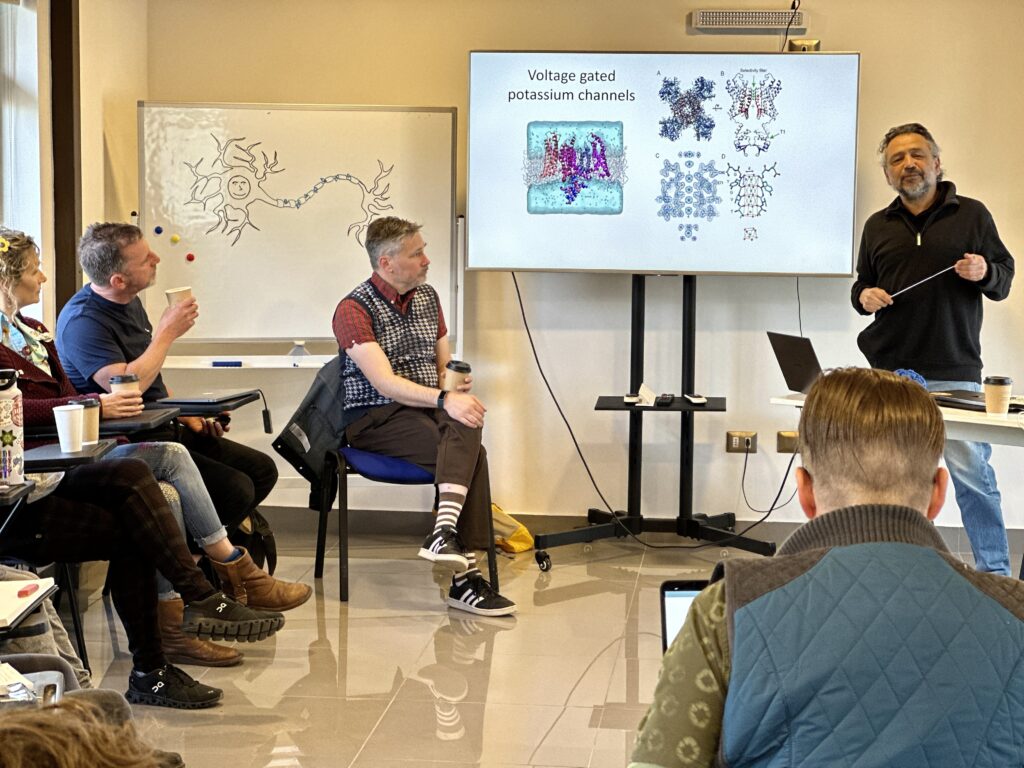
I highly recommend this program to any student who enjoys art, science, culture studies and history.
LEARN MORE: Cerebrarte: Arte y Cerebros en Chile
LEARN MORE: Las neuronas son bacánes!
I am very grateful for this mentorship opportunity and have learned so much. It is an honor to be a part of, and witness, the unfolding of an important experiment on memory. Thank you to Dr. Matthew Lattal, Dr. Rifka German, McNair and Dr. Bill Griesar for helping me reach for the stars.


